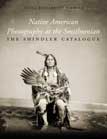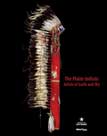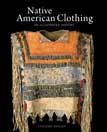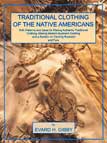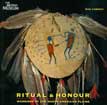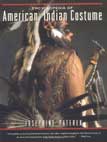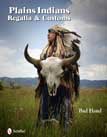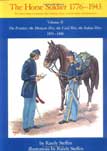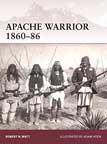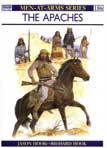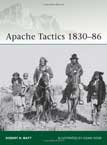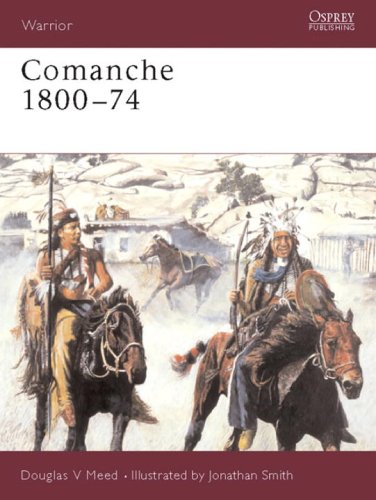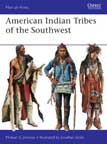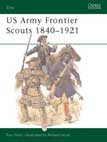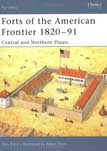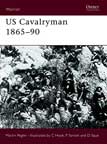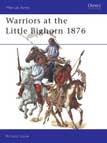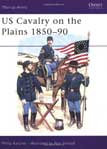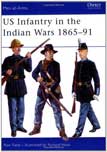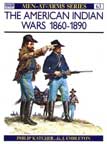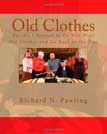

This book of hauntingly beautiful Native American portraits reflects the tragic history of the Cheyenne, Sioux, Pawnee, Cherokee, and other groups whose leaders traveled to Washington in the mid-nineteenth-century to negotiate treaties with the US government. As compelling as the famous photographs of Indians by Edward S. Curtis, these unique images provide a close-up, unromanticized record of Native American life at a critical time in the history of relations between the US government and Native Americans, just after the Civil War and at the beginning of the great westward expansion of US territories. The images form the core of the Smithsonian's extensive collection of Native American photographs and of important collections in many other major museums around the world.
Paula Fleming recounts the history of this collection, which was the Smithsonian's—and perhaps the country's—first photographic exhibit. A succint biography of A. Zeno Shindler, the photographer, is followed by a thoughtful examination of the key events surrounding the Indian delegations in Washington, providing for the first time a comprehensive picture of a poignant moment in history.
Accompanying a groundbreaking exhibition, this is the first comprehensive survey of the magnificent artistic traditions of the Plains Indians. The Plains Indians: Artists of Earth and Sky celebrates the extraordinary beauty, power, and spiritual resonance of Plains Indian art throughout time. Richly illustrated, this monumental volume includes a wealth of masterworks from European and North American collections, ranging from a 2,000-year-old Human Effigy stone pipe to a 2011 beaded adaptation of designer shoes. Works of art collected centuries ago by French traders and travelers are presented together with those acquired by Lewis and Clark on their famous expedition of 1804–6, along with objects from the early reservation era and contemporary works based in traditional forms and ideas. The distinct Plains aesthetic—intertwined with the natural world, ephemeral, and materially rich—is revealed through an array of forms and mediums: painting and drawing; sculptural works in stone, wood, antler, and shell; porcupine quill and glass bead embroidery; feather work; painted robes depicting figures and geometric shapes; and richly ornamented clothing and ceremonial objects. Many nations are represented—Osage, Quapaw, Omaha, Crow, Cheyenne, Arapaho, Lakota, Blackfeet, Pawnee, Kiowa, Comanche, Mesquakie, Kansa, and others. With newly researched texts by leading scholars, this important book charts the continuum of centuries of artistic tradition and reflects the significant place that Plains Indian culture holds in European history and in the heritage of North America.
More than five centuries of native peoples' artistry.
Native Americans crafted beautiful clothing out of skins, pigment, quills and sinew. The collection of photographs in this outstanding reference celebrates this decorative genius. Many of the 300 photographs from more than 60 leading museums and private collections have never been published previously.
The book describes the clothing in fascinating detail, from moccasins and tunics to sashes, bags and ceremonial and burial costumes. Theodore Brasser explains who made what and how, as well as the meanings of the different kinds of decoration, such as beadwork, embroidery, appliqué, patchwork, weaving and dyeing. There are also many examples of native pottery and other historic artifacts that depict themes used in the clothes.
Native American Clothing provides a thorough historical background of the many influences on this clothing, including:
- Mythology
- Social status
- Political standing
- Wealth
- Climate
- Geography
- Contact with European settlers.
The book covers the entire North American continent and is organized by tribal groups and regions:
- Southeast
- Northern east coast
- Eastern Great Lakes
- Eastern sub-Arctic
- Great Lakes
- Plains
- Southwest
- Plateau/desert
- California
- Northwest coast
- Western sub-Arctic
- Arctic.
Numerous maps show the ranges of the tribes and convey how trade and travel spread cultural themes.
With authoritative text and art-quality color reproductions, Native American Clothing will be important to collectors and historians and will also appeal to general readers.
A new and exciting book for those interested in traditional Native American dress and for anyone who wants to know how to make use of their own deerskins and other animal skins, in either a traditional or modern manner. The information in this 176 page volume is extensive, well researched and fascinating to read!
This book first explores the Traditional Dress of Native Americans in the nine major cultural areas of North America, with an emphasis on everyday or “work” clothes. Individual items of clothing are then discussed in detail. Among the many items included are skirts & aprons from a variety of materials, dresses of many styles, capotes, robes, breechclouts, leggings, shirts, breastplates, parkas, hats, moccasins cradleboards and sandals. Selected pieces of dress clothing, primarily from the Plains, are also discussed. Included are drawings, patterns and ideas for making replicas of primitive clothing. There are also sections on how some people currently live in buckskin year round and surprising facts about native clothing.
Buckskin Today describes clothing made in modern times in both period and modern styles. Most of the items in this section were submitted to the author by others and there is a wide range of ideas (from one skin skirts to fur mittens and hats to modern buckskin jackets and coats). Explanations are given on how each piece was made. In addition bags, pouches and parfleche are covered and there are tips for sewing and cleaning buckskin.
Tanning Buckskins and Fur emphasizes Indian brain tanning methods including dry-scrape and wet-scrape techniques. Coloring and dyeing hides are described and there is an extensive discussion of the physical structure of deerskin. Other tanning methods included are Ivory® soap buckskin and acid tanning techniques. Over 100 references on these subjects are provided.
Extensive research makes this book a very useful reference for anyone interested in Native American or self-reliant lifestyles, as well as for those who attend pow wows and rendezvous.
For thousands of years, Plains Indians and their ancestors have occupied the vast region that stretches from the Mississippi river to the Rocky Mountains and from the Canadian plains to the Gulf of Mexico. Today, peoples such as the Blackfoot and Sioux still live in groups bound by language and shared rituals. From about 1800, one of the most important units beyond the extended family was the 'warrior society' - a social, political and ritual group that engaged in warfare and organised ceremonial life. The societies played a prominent role in battles, offering members the opportunity to gain honours through individual acts of bravery such stealing horses, capturing women, and taking scalps during war raids. These societies, however, have a rich ritual life that was marked by a strong sense of spirituality. In their ceremonies society members made use of objects such as pipes, rattles, and headdresses, as these were significant to their shared ideas of ritual and honour. Through a selection of unique objects from the British Museum's collection, this beautifully illustrated little book explores the world of the warriors of the North American Plains. Here are exceptional examples of feather headdresses, shields, moccasins, painted hides, scalps, pipes, tomahawks, and traditional and contemporary costumes. Many of these items may seem initially familiar from popular culture, but their deeper ritual significance is revealed by the author. A perennially popular subject, this book will appeal to young and old alike.
Slipping away from us in these times of the homogenization of culture are the traditions of older societies, some of them dating from 9000 B.C., who understood and were in tune with the changing vistas of the North American continent. Practical, yet with an eye for beauty, these peoples clothed themselves in a vast array of styles that will be forgotten unless preserved. The Encyclopedia of American Indian Costume offers complete descriptions and cultural contexts of the dress and ornamentation of the many nations that have shared this continent. The book is divided into ten cultural regions, with each chapter giving an overview of the regional clothing. Tribal information includes men's and women's basic dress, footwear, outerwear, hair styles, headgear, accessories, jewelry, armor, special costumes, garment decoration, face and body embellishment, and transitional dress after European contact. This beautifully designed book contains more than 150 photographs and illustrations.
This original study of Plains Indian cultures of the 19th century is presented through the use of period writings, paintings and early photography that relate how life was carried out. The author juxtaposes the sources with new research and modern color photography of specific replica items. Thereby, the past comes to life and today's readers learn this history with concrete examples to which they relate. The comprehensive text documents the seven major tribes: Blackfeet, Cheyenne, Comanche, Crow, Hidatsa, Mandan, and Lakota. Observations of Plains Indian men's and women's habits include procuring food, dancing, developing spiritual beliefs, and experiencing daily life. Prominent leaders and average members of the tribes are introduced and major incidents are explained. True stories come to light through objects that relate to each incident and personality. With an understanding of these cultures, readers learn basic similarities of all people, ancient to present, including today's multi-cultural society.
This is the second volume of a projected four-volume work. In Volume I the author delineated the uniforms, arms, accouterments, and equipment of the period from 1776 to 1850. In this volume he addresses himself to the eventful, bloody tragic mid-nineteenth century. Here he describes the dress and equipment of the horse soldier of the early frontier, the Mexican War, the Civil War, and the wars with the Indians. The uniforms, insignia, decorations, arms, and horse gear are described and profusely illustrated in three color plates and 126 black-and-white drawings. For his models the author used actual uniforms and equipment, supported by official government documents.
Among the subjects covered in this volume are the dress and equipment manufactured to meet the needs of cavalrymen at the early outposts east of the Missouri and in the brief War with Mexico that was a testing ground for the Civil War to come. (Ironically, much of the equipment and arms used by the United States Cavalry was designed by officers and government employees who later joined the Confederates.)
After the war came a new duty for the horse soldier—pacification of the hostile Indians of the West. As the needs of this harsh and demanding duty became clear, radical modifications were made to meet them. All these changes are described and minutely illustrated in this, the second volume of an indispensable reference work for American historians.
Focusing on the Chiricahua Apache, led by such famous warriors as Cochise Mangas Coloradas, Victorio, Nana and Geronimo, this book strips away the myths behind the history of some of the feared opponents of the US Army in the southwest United States. It explains how their upbringing, training and culture equipped them uniquely for survival in the harsh environment of New Mexico and Arizona and enabled them to fight off their Mexican and American enemies for so long.
For decades legendary Apaches like Victorio and Geronimo led resistance in the desert Southwest that defied the firepower of the post Civil War US Army. The Apache warrior evokes a number of images; endurance, elusive cunning, ferocity, and cruelty. These are images prevalent both during the Apache Wars of the 1860s to the 1880s and are, to some extent, still believed today. General George Crook described them as "Human Tigers."
The Apache culture of 1850 was a blend of influences from the peoples of the Great Plains, Great Basin and the South-West, particularly the Pueblos, and – as time progressed – from the Spanish and American settlers. This fascinating work by Jason Hook examines the Apaches, their social structure, religion and warcraft, and outlines the Apache wars and conflicts with the American, including the dramatic story of Crook and Geronimo. This absorbing volume is illustrated with a wealth contemporary photographs, museum examples and eight stunning full page colour plates by Richard Hook, making it the perfect book for anyone interested in this fascinating culture.
The Apache culture of the latter half of the 19th century blended together the lifestyles of the Great Plains, Great Basin and the South-West, but it was their warfare that captured the imagination. This book reveals the skillful tactics of the Apache people as they raided and eluded the much larger and better-equipped US government forces. Drawing on primary research conducted in the deserts of New Mexico and Arizona, this book reveals the small-unit warfare of the Apache tribes as they attempted to preserve their freedom, and in particular the actions of the most famous member of the Apache tribes - Geronimo.
In the 18th and 19th centuries, the numerous tribes of mounted Comanche warriors were the "Lords of the Southern Plains". For more than 150 years, these ferocious raiders struck terror into the hearts of other plain tribes, Mexican villagers and Anglo settlers in frontier Texas. Their dominion stretched from southern Colorado and Kansas into northern Mexico. This book documents the life and experiences of a Comanche warrior at the peak of their dominance. Following a hypothetical figure through a lifetime, it covers key social and cultural aspects as well as documenting the methods and equipment that they used to wage war.
This book continues Osprey's series of Men-at-Arms titles on the history, costume, and material culture of the native peoples of North America, which is organized into geographical regions, language groups, and tribes. It was in the Southwest—modern Arizona, New Mexico, and parts of California and other neighboring states—that the first major clashes took place between 16th-century Spanish conquistadors and the indigenous peoples of North America. This uniquely long history of contact, conflict, and coexistence with first the Spanish, then their Mexican settlers, and finally the Americans, gives a special flavor to the region. So too does the wide cultural diversity of the peoples who inhabited the challenging environment of the Southwest— from the quasi-Plains culture of the Kiowa-Apache and Lipan, to the pueblo cave-villages of the agricultural Zuni and Hopi. (Indeed, from c. 1700 to 1848 the Pueblo villagers often allied themselves with Spanish and Mexican settlers against the encroachments of Apache and Navajo hunters and raiders.)
Despite nearly 500 years of white settlement and pressure, the traditional cultures of the peoples of the Southwest survive today more strongly than in any other region, and with them a sense of separate identity. The best-known clashes between the whites and the Indians of this region are the series of Apache wars, particularly between the early 1860s and the late 1880s. However, there were other important regional campaigns over the centuries—for example, Coronado's battle against the Zuni at Hawikuh in 1540, during his search for the legendary "Seven Cities of Cibola"; the Pueblo Revolt of 1680; and the Taos Revolt of 1847—and warriors of all of these are described and illustrated in this book.
War was inseparable in the local cultures from religious beliefs, such as the veneration of the mothers of war gods—White Painted Woman among the Apache, and Changing Woman among the Navajo; the plates in this book illustrate the rites associated with such figures, and several other important ritual observances. The variety of costumes illustrated, from the earliest times up to today, make these plates especially rich.
The role of the Frontier scout in the US Army during the period of westward expansion, was often far more important than that of the commanding officer. They possessed a priceless knowledge of the geography, people and characteristics of the great, unknown American hinterland and from the earliest days of exploration, the US Army depended on its scouts to guide troops across the plains and through the mountains as they guarded the nation's frontier settlements. This book tells the colourful story of these frontier men, covering many famous scouts such as 'Wild Bill' Hickok and 'Buffalo Bill' Cody.
A major period of westward expansion took place in the United States during the first half of the 19th century. Fur trading, the coast-to-coast railroad, the California gold rush and the removal of Native American tribes both facilitated and encouraged America's "manifest destiny" to become a transcontinental nation. The task of protecting the settlers from the tribes that inhabited the Great Plains fell to the US Army, and to do this an extensive network of permanent forts was created via construction and acquisition. This title examines why the forts were built, as well as their design, defensive features and the role they played in the settlement of the American West. The daily lives of the garrison soldiers and fort inhabitants are also covered, together with the fighting witnessed at key sites.
The period 1865-90 was one of unparalleled change in American frontier history. This span of 25 years witnessed the end of the traditional nomadic lifestyle of the plains Indians, the colonisation of the West by white settlers, and the first experience of the US army in fighting a form of irregular warfare for which its soldiers and commanders were untrained, and its equipment unsuited. That they acquitted themselves so well in the face of bureaucratic meddling, poor supply and appalling climatic conditions, speaks highly of the tenacity and physical toughness of the volunteers who served in the West during campaigns such as the Comanche Campaign (1867-1875), the Red River War (1874-1875), the Nez Perce War (1877), and the Ghost Dance War (1890-1891) among others.
The battle which took place on the Little Bighorn river on June 25, 1876 has passed into legend as “Custer's Last Stand”. This remarkable book is a unique analysis of the oral and pictorial evidence for the appearance of nearly 30 named Sioux and Cheyenne warriors who were present that day, and for their parts in the battle. The fruit of many years' study by one of today’s most internationally respected interpreters and illustrators of Native American material culture, it offers biographical notes and meticulously researched color reconstructions, together with rare photographs and pictographs.
Two events in the 19th century turned the minds of Americans westwards towards eventual and inevitable conflict with the Plains Indians. The first was victory in the Mexican-American War, which brought millions of acres of new land in the West. The second was the discovery of gold in California. One of the results of this migration was conflict with the Indians who inhabited the Plains. So it was natural that the Army, the nation's armed peace-keepers, should be sent to garrison the West. This book by Philip Katcher tells the absorbing story of the US cavalrymen who patrolled the Plains from 1850-90.
Thanks to Hollywood's many portrayals of the US Cavalry, it is little understood that the infantry played as great a part in the Indian Wars of the 1860s-80s, and were more consistently successful.
The great Paiute War of 1866, where the infantry of the most renowned Indian-fighting general, George Cook, excelled in battle, together with the role of other infantry units in the final subjugation of Geronimo's Apaches in 1886, are but two instances of their achievements.
Moreover, after the Custer massacre, it was the infantry under Gen Nelson Miles who out-fought Crazy Horse's Sioux in the Wolf Mountains in 1877; Crazy Horse christened them 'Walk-a-Heaps'.
The struggle against the Indians was the longest war in American military history and the Indians were formidable opponents. They knew the terrain, could live off the land and fielded some of the finest light cavalry in the world. Facing such a determined foe, one soldier even wrote: "The front is all around and the rear is nowhere." The US Infantry endured years of sporadic battles that were bitterly contested against an enemy who was fighting for their very survival.
Presenting an illustrated history of these critical but overlooked soldiers of the Indian Wars, and featuring their involvement in the legendary battles of Wounded Knee and Wolf Mountains, this narrative includes details of their tactics, training, uniforms and equipment culminating in the eventual "closing" of the American Frontier in 1890 and the final conquest of the indigenous inhabitants of North America.
The American Indian Wars, the most famous of which were fought on the great Western plains between 1860 and 1890, were among the most tragic of all conflicts ever fought. To the victor went no less than the complete domination of the continent, to the loser total extinction. Accustomed only to small scale skirmishing and raiding, the Indians were doomed from the start. They had never fought a European-style war with its constant pressure and co-ordinated strategies. Philip Katcher details the armies of both sides, paying particular attention to their organization and uniforms.
This book is an indispensable guide to the often misunderstood field of living history. It presents the actuality that there is a great deal more involved in this discipline than merely “wearing old clothes and going back to the past.” This volume succinctly captures the perspectives that Richard Pawling has gained from over thirty-five years of experience in the interpretive profession (in county, state and national parks and as entrepreneur and owner of Rich Pawling’s History Alive!). Here, Pawling shares his observations and advice about everything from designing a living history persona to his successful use of this provocative teaching technique in the college classroom, to the role of research in helping you to learn about your own genealogical past. Though written for a broad audience, this book should be of particular interest to those employed as an interpretive park ranger or a naturalist, a museum or tour guide, or those who volunteer as a military reenactor or as a docent at a park, museum or historic site. Old Clothes presents the important lessons Pawling has learned along the way, the most important of which is that “life is a journey and understanding our past plays an important role in helping us to continue to learn not only about life in general, but more importantly, about ourselves.”
Pope Stefanus II arrives in Ponthion
Afonso IV succeeds Dionysius as King of Portugal
Calais, last English possession in France, retaken by French
Antonio "Michele" Ghislieri is elected Pope Pius V
Michaele Ghislieri is elected Pope Pius V
England signs an offensive and defensive alliance with Netherland
Last day of the Julian calendar in Bohemia and Holy Roman empire
Boris Godunov seizes Russian throne on death of Feodore I
Robert, Earl of Essex leads revolt in London against Queen Elizabeth
Fire destroys Jamestown, Virginia
Galileo discovers 1st 3 Jupiter satellites, Io, Europa and Ganymede
Francis Bacon becomes English lord chancellor
Germany and Transylvania sign Peace of Nikolsburg
Composer Pier Cavalli marries rich widow Maria Sosomeno
Fire after heavy storm destroys 2 / 3 of De Rijp Neth, 1 dies
Russian Czar Peter the Great departs Netherlands to England
Typewriter patented by Englishman Henry Mill (built years later)
Battle at Panipat India: Afghan army beats Mahratten
1st US commercial bank, Bank of North America, opens in Philadelphia
1st US seed business established by David Landreth, Philadelphia
1st balloon flight across English Channel (Blanchard & Jeffries)
2nd Bank of US opens
1st printing in Hawaii
Liberia colonized by Americans
1st US Railroad Station opens (Baltimore)
HMS Beagle anchors off Chonos Archipelago
Florida troops takeover Ft Marion at St. Augustine
Battle of Manassas Junction, Virginia
Romney Campaign-Stonewall Jackson march towards Romney, West Virginia
Arkansas constitutional convention meets in Little Rock
Mississippi constitutional convention meets in Jackson
Dutch King Willem II marries Emma von Waldeck-Pyrmont
Start of Sherlock Holmes adventure "Valley of Fear" (BG)
W B Purvis patents fountain pen
Mine explosion kills 100, Krebs, Okla-blacks trying to help rescue white survivors, driven away with guns
Hermann Sudermanns "Heimat, " premieres in Berlin
Motion picture experiment of comedian Fred Ott filmed sneezing
Fanny Farmer publishes her 1st cookbook
Start of Sherlock Holmes "Adventure of Blanched Soldier" (BG)
Marconi Co establishes "CQD" as 1st International radio distress signal
England beat Australia by one wicket at the MCG
Stanley Cup: Ottawa Senators sweep Galt (Ont) in 2 games
1st airplane bombing experiments with explosives, San Francisco
Dutch Scouts Organization established in Amsterdam
William M Burton patents a process to "crack" petroleum
1st steamboat passes through Panama Canal
German troops conquer Fort Vaux at Verdun
Baltimore Sun warns of Ku Klux Klan
Musical "Big Boy" with Al Jolson premieres in New York City
Coml transatlantic telephone service inaugurated between New York and London
Harlem Globetrotters play 1st game (Hinckley, Ill)
"Buck Rogers, " 1st sci-fi comic strip, premieres
"Tarzan, " one of the 1st adventure comic strips, 1st appears
1st telephone connection between Netherlands and East Indies
1st game played at Orchard Lake Curling Club, Michigan
1st edition of People and Fatherland published in the Netherlands
"Flash Gordon" comic strip (by Alex Raymond) debuts
Princess Juliana marries German Prince Bernhard von Lippe-Biesterfeld
Tennis champs Helen Moody and Howard Kinsley volley 2,001 times (1h18m)
WW II siege of Bataan starts
Air Force announces production of 1st US jet fighter, the Bell P-59
Lord Haw-Haw reports total German victory at Ardennen
Cambodia becomes autonomous state inside French Union
US President Truman raises taxes for Marshall-plan
1st photo of genes taken at University of Southern California by Pease and Baker
"Happy as Larry" closes at Coronet Theater NYC after 3 performances
Mental health wing of Mercy Hospital burns, kills 41 (Davenport Ia)
French Plevin government falls
President Truman announces development of hydrogen bomb
Marian Anderson becomes 1st black singer to perform at Met (NYC)
WCIQ TV channel 7 in Mt Cheaha, AL (PBS) begins broadcasting
Vinoo Mankad scores 231 vs. New Zealand, 413 opening stand with Roy
USSR shrinks army to 300,000
1st NFL Playoff Bowl (runner-up bowl) - Detroit beats Cleveland 17-16
Trucial States (now UAE) issue their 1st postage stamps
AFL Pro Bowl: West beats East 47-27
Assassination attempt on Indonesian President Sukarno, fails
Bollingen Prize for poetry awarded to John Hall Wheelock
1st class postage raised from 4 cents to 5 cents
Bahamas becomes self-governing
Dick Weber rolls highest bowling game in air (Boeing 707)
France announces it will convert $150 million of its currency to gold
Dance Theatre of Harlem debuts
Gene Kiniski beats Lou Thesz in St. Louis, to become NWA champ
"Newlywed Game" premieres on ABC TV
"GE College Bowl" quiz show premieres on NBC TV
1st class postage raised from 5 cents to 6 cents
US Congress doubles President salary
Farmers sue Max Yasgur for $35,000 in damages caused by "Woodstock"
LA Lakers chalk up 33rd consecutive win (NBA record)
Lewis F Powell Jr becomes a Supreme Court Justice
William Hubbs Rehnquist, sworn in as Supreme Court Justice
"Purlie" closes at Billy Rose Theater NYC after 14 performances
British Darts Organisation founded in North London
Johnny Watkins bowls six overs 0-21 vs. Pakistan Never again
US Poet James Merrill wins Bollingen Prize
WNPB TV channel 13 in Marquette, MI (PBS) begins broadcasting
Dutch rations gasoline
"Shenandoah" opens at Alvin Theater NYC for 1050 performances
Bollingen Prize for poetry awarded to AR Ammons (Sphere)
Led Zeppelin fans riot before Boston concert, causing $30,000 damage
Angola revises its constitution
Vietnamese forces capture Phnom Penh from Khmer Rouge
"Fame" premieres on NBC TV
Australia regain the Ashes with a 2-1 series win vs. England
Reagan ends US arms embargo against Guatemala
"King & I" opens at Broadway Theater NYC for 191 performances
KHQ-AM in Spokane WA changes call letters to KLSN (now KAQQ)
Chicago Bears defeat New England Patriots 46-10 in Super Bowl XX
Netherlands Bank issues 250 guilder notes
STS 61-C mission scrubbed at T -9m because of weather problems
US President Reagan proclaims economic sanctions against Libya
French airplanes harass Libyan positions in Duadi Doum
Kapil Dev takes his 300th Test wicket, at 28 the youngest
Akhito becomes Emperor of Japan
Cleveland Cavs block 21 New York Knick shots tying NBA regulation game record
International Conference on Limitation of Chemical Weapons opens in Paris
Lynn Jennings runs world record 5K indoor at 15:22.64
Tower Of Pisa closed to the public after leaning too far
"Nia Peeples Party Machine" premieres on TV
AT&T releases video-telephone ($1,499)
South Africa beat Australia in the Sydney Test by 5 runs
United Express commuter plane crashes in Ohio, killing 5
US female Figure Skating championship won by Tonya Harding
"Christmas Carol" closes at Richard Rodgers Theater NYC after 18 performances
"Passion" closes at Plymouth Theater NYC after 280 performances
"Crazy after You" closes at Shubert Theater NYC after 1622 performances
16th United Negro College Fund raises $12,600,000
Newt Gingrich, narrowly re-elected speaker of the House
